... one day, as I was sniffing around the Tangerine tree in search from some cool biological surprises for this series of posts ...
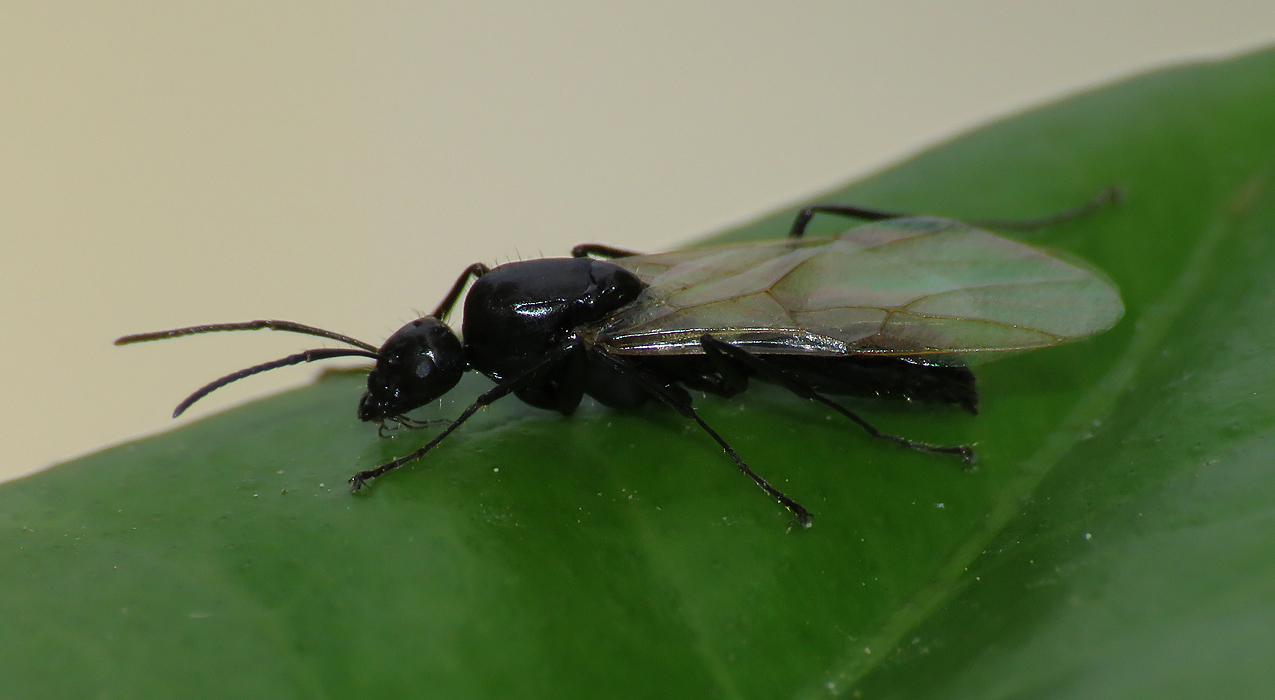
... I noticed a winged ant resting on the leaf ... and then another one landed not far from there ... followed by a few more ... it was clear at this point that a small scale invasion is going on ... and soon the winged reproductive ants from the nearby hole in the wall were all over the tree.
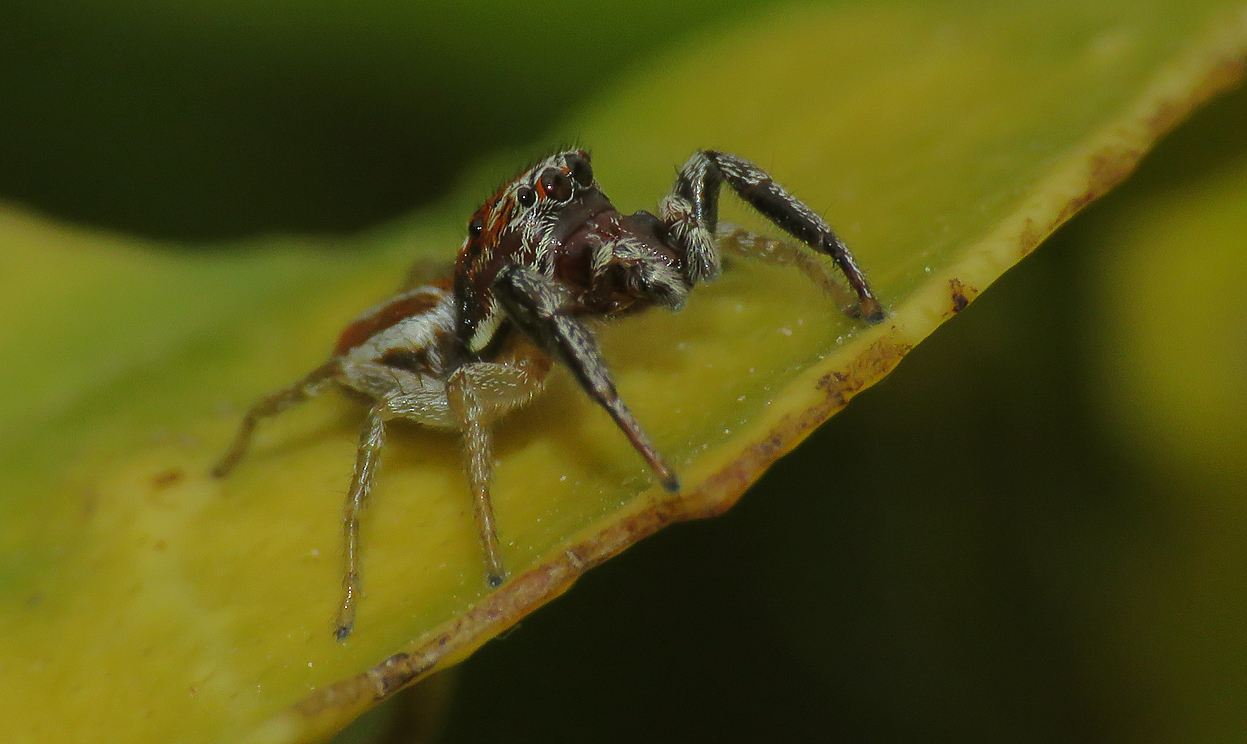
This abundance of food, suddenly brought on the open a surprisingly varied Salticidae population that was hiding somewhere deep in the dense foliage. I mean, I was regularly encountering a few jumping spider of this Mediterranean species, the Icius hamatus, in the days before this ant event ...
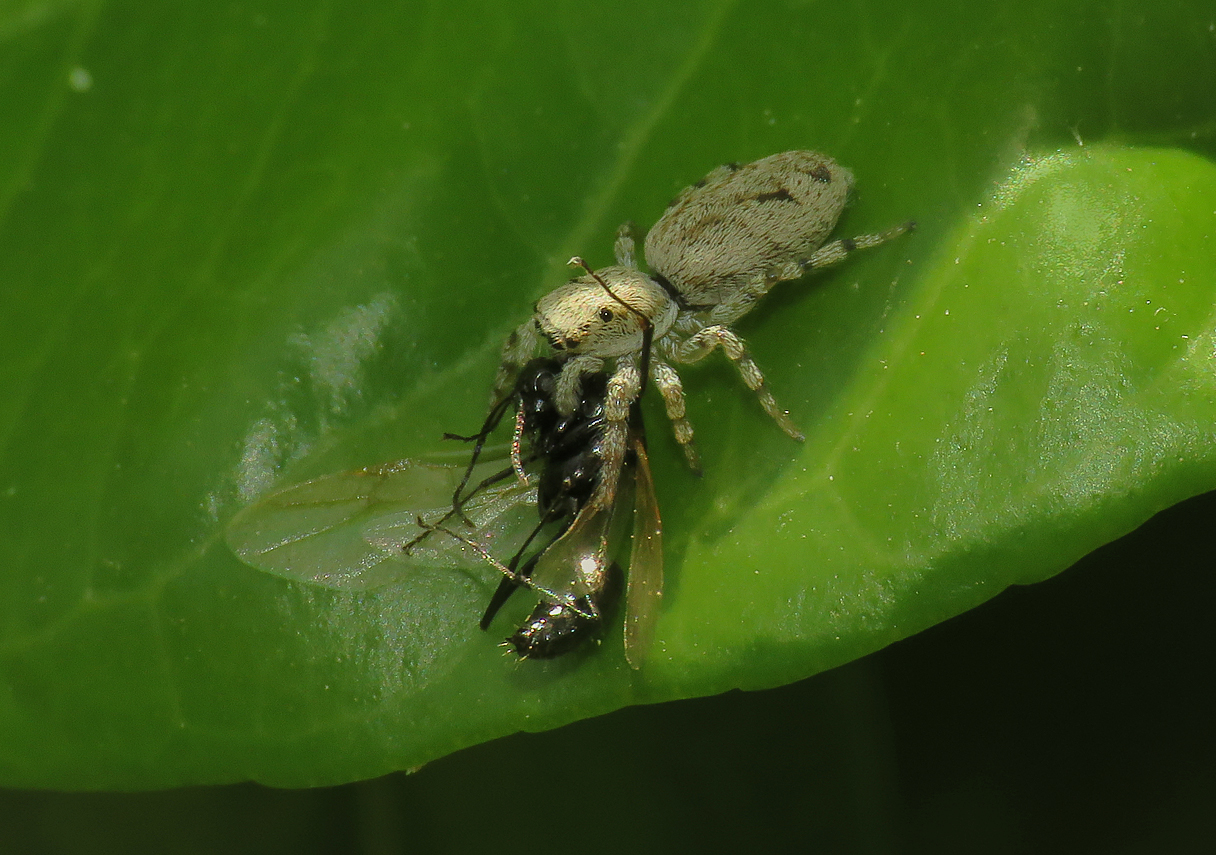
... but then this other predator appeared ...
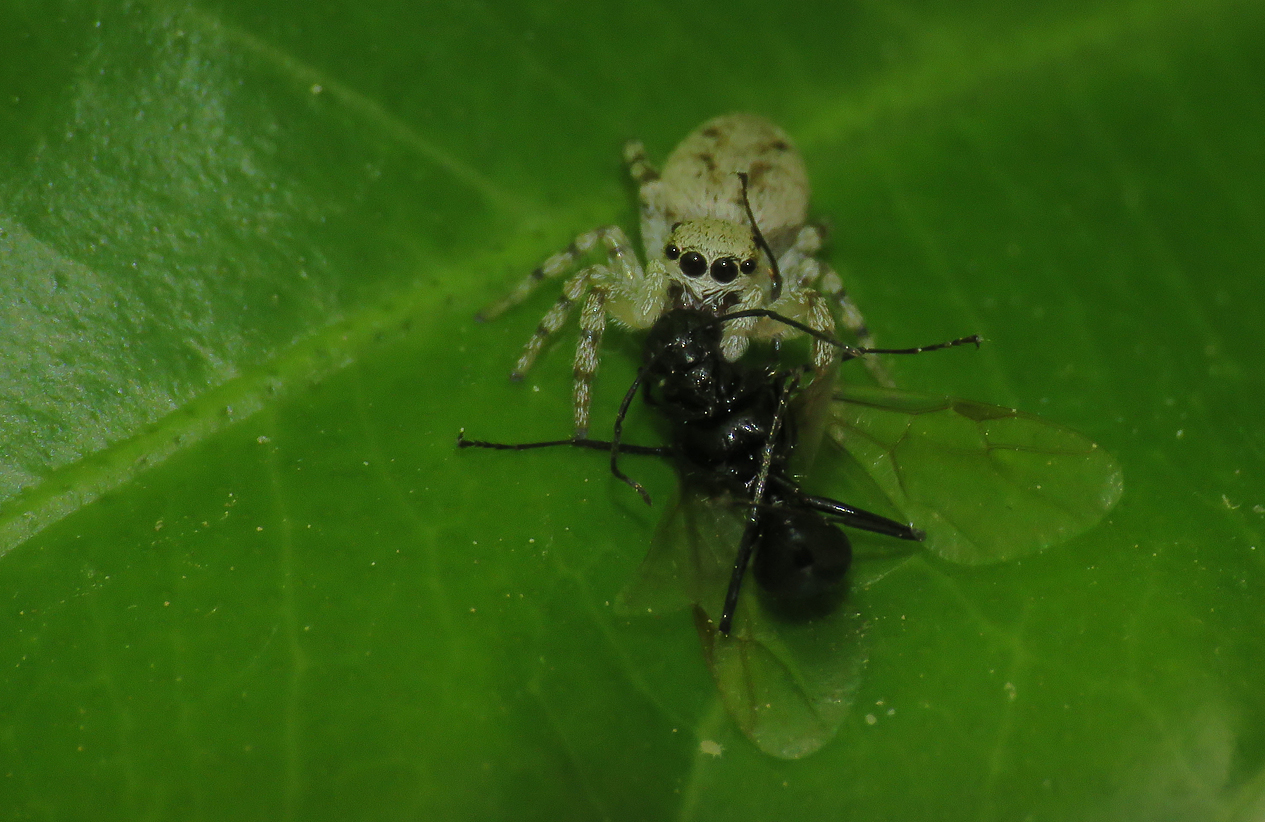
... to get an abundant easy meal from the extraordinary situation.
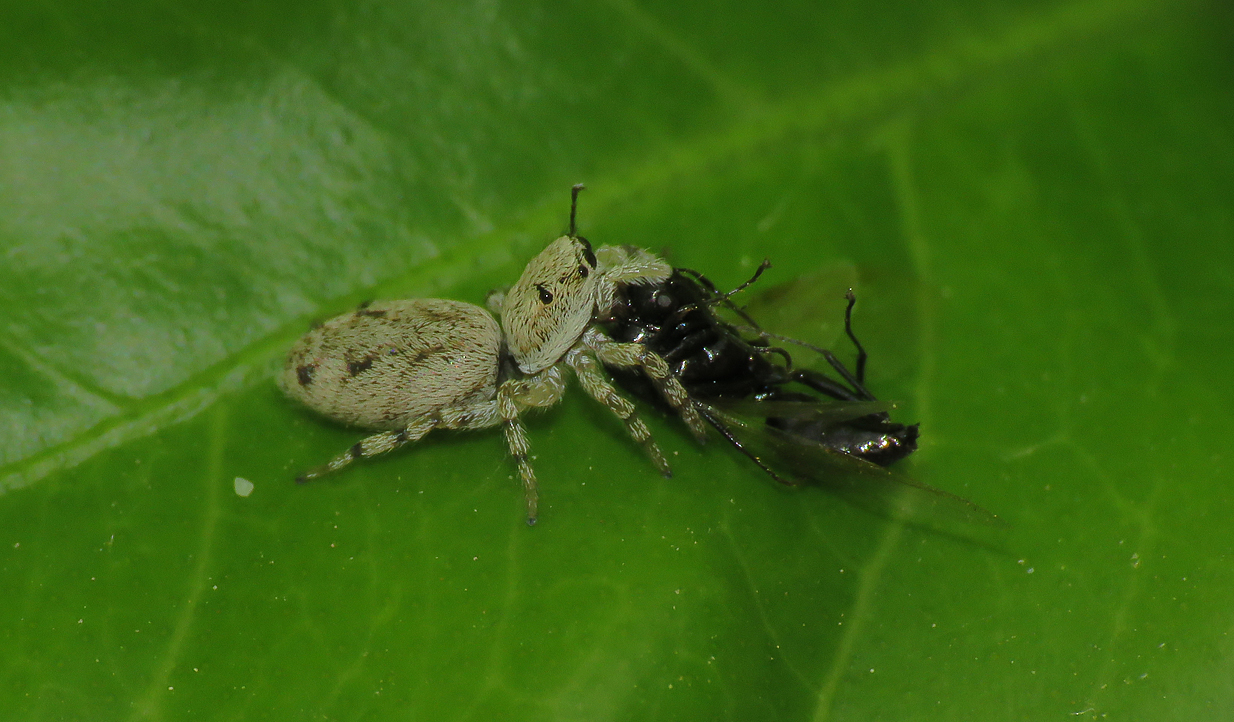
I didn't found the name of this species ...
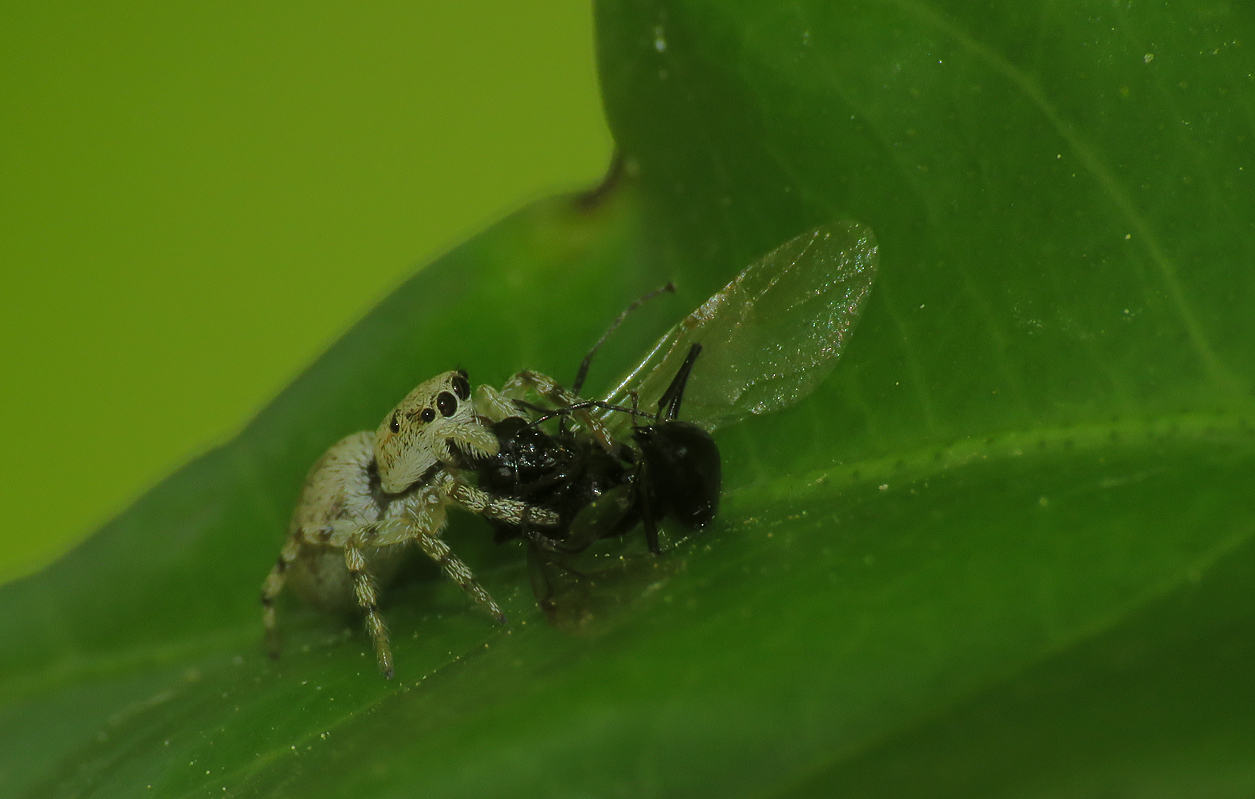
... that I saw in the garden only on that day ... a few weeks ago.
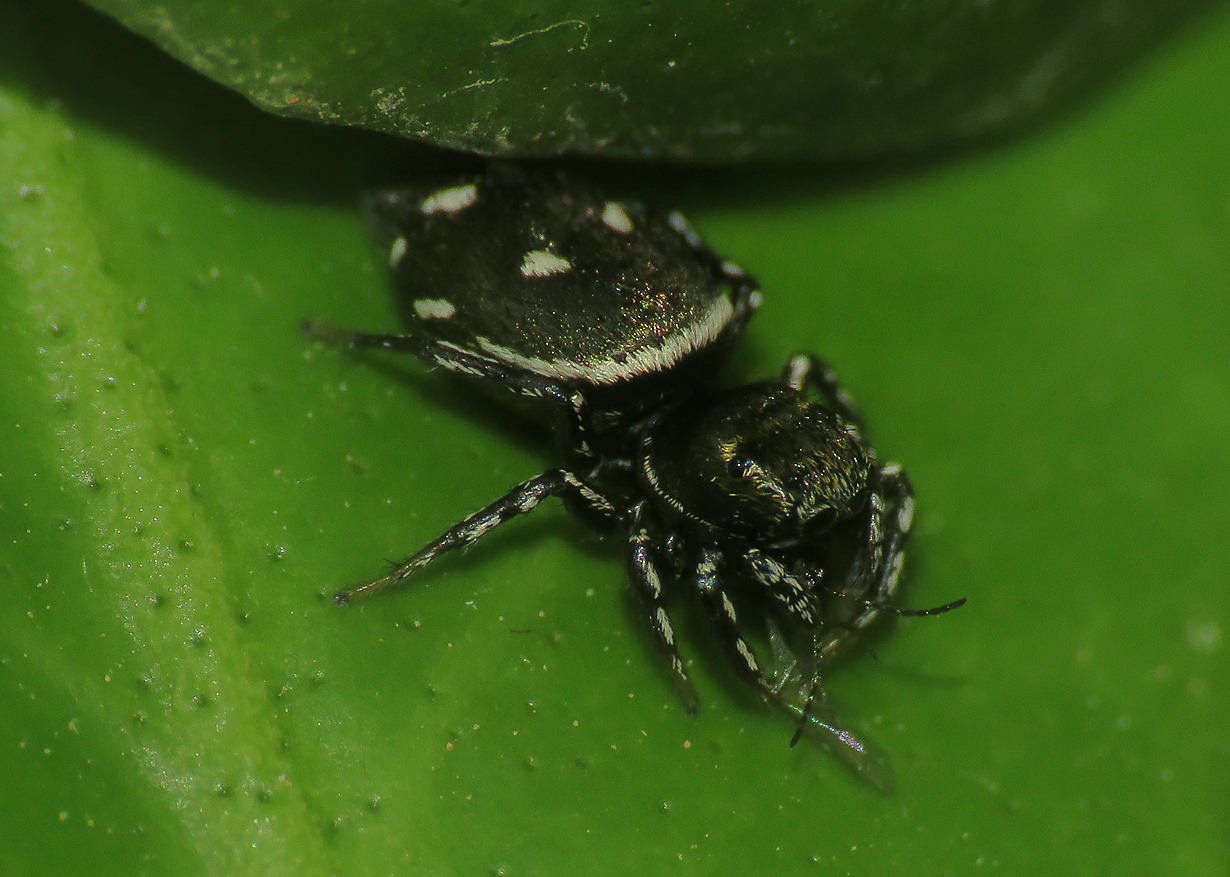
Not all the tiny jumpers were jumping for ants ... this minuscule Heliophanus kochii has caught something more appropriate for its size ... a pair of small antennae is visible on the shot ... maybe an aphid ... or some other extremely small Hemiptera from the Citrus universe.
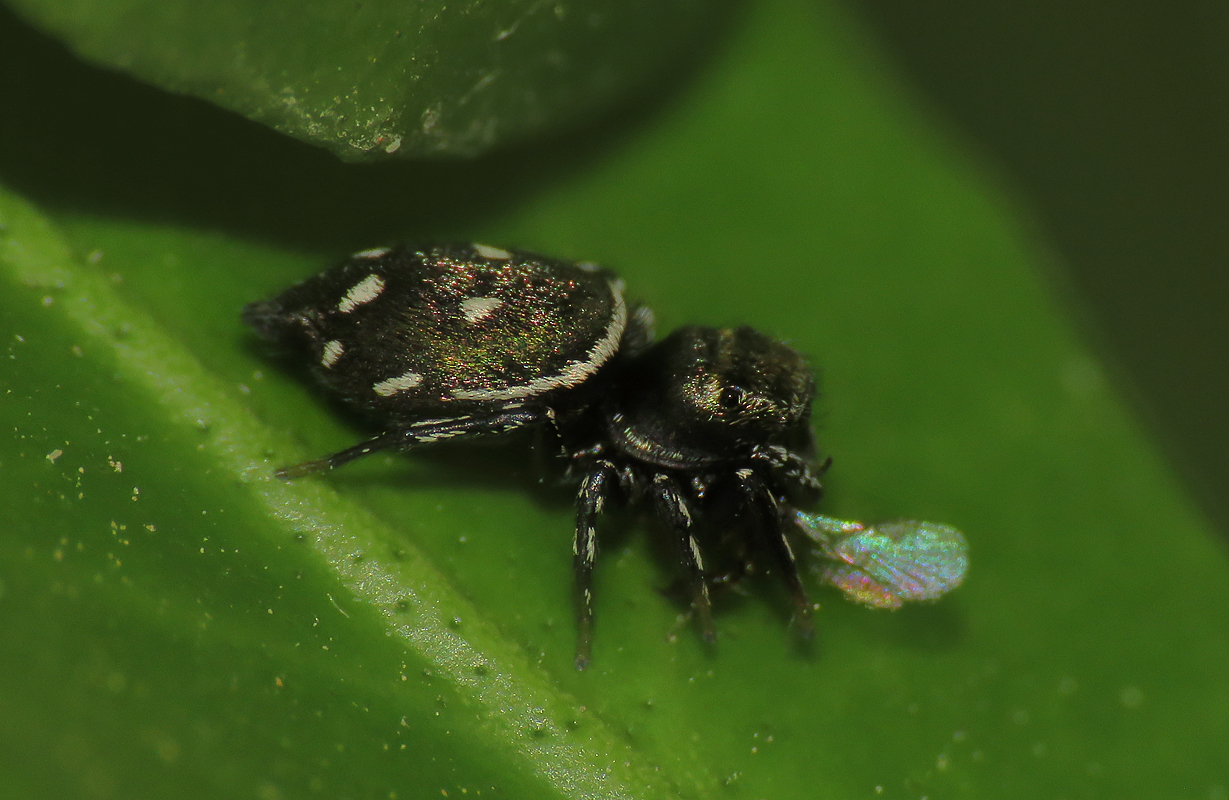
On this shot you can see the wing of the prey ... and on the following photograph ...
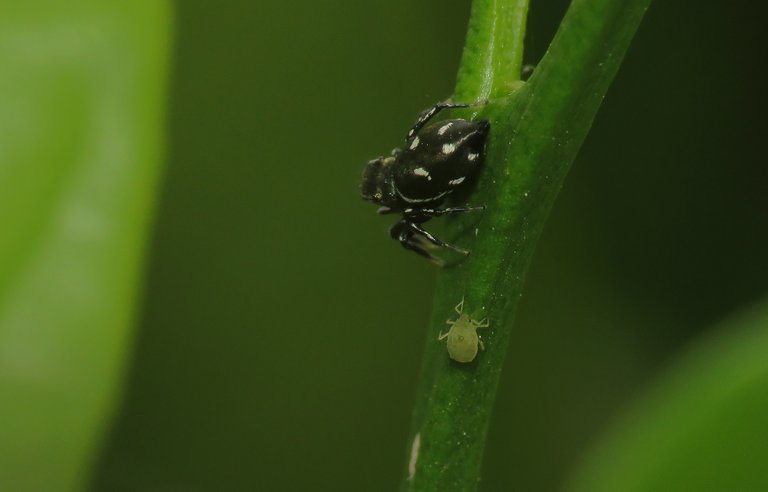 (Enlargeable)
(Enlargeable)
... you can see the Heliophanus kochii standing near some small aphid ... there are much bigger aphids on the tree ... so you can get the idea how small this spider is.
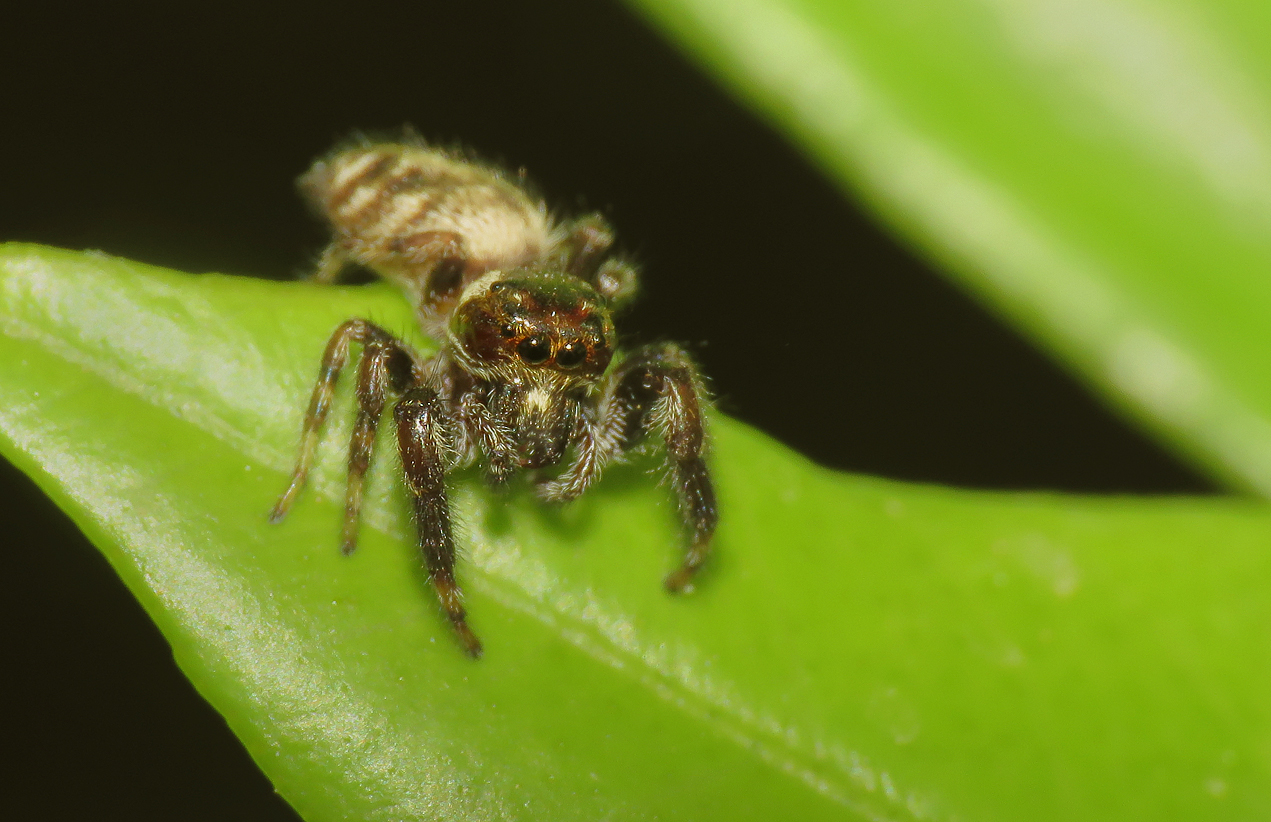
Here is another species I couldn't found in my long Internet search ...
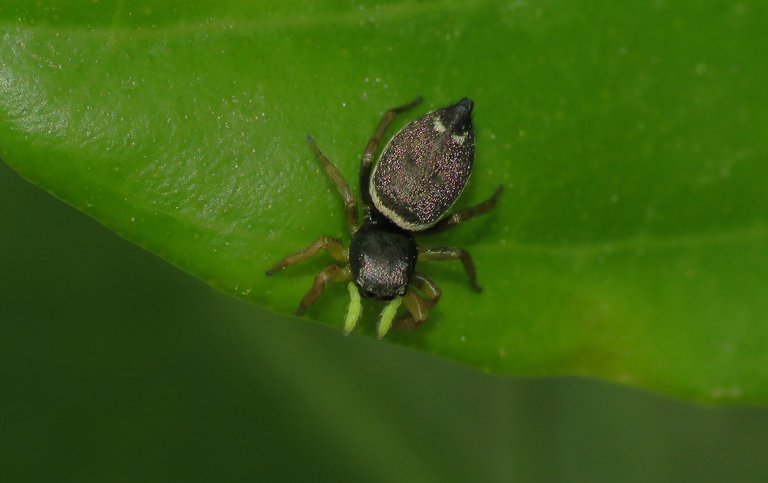
... and here ... with beautiful vivid forelegs that look like something with neon light inside, and that the spider uses for signaling and communication ... is the interesting Heliophanus kochii's relative ...
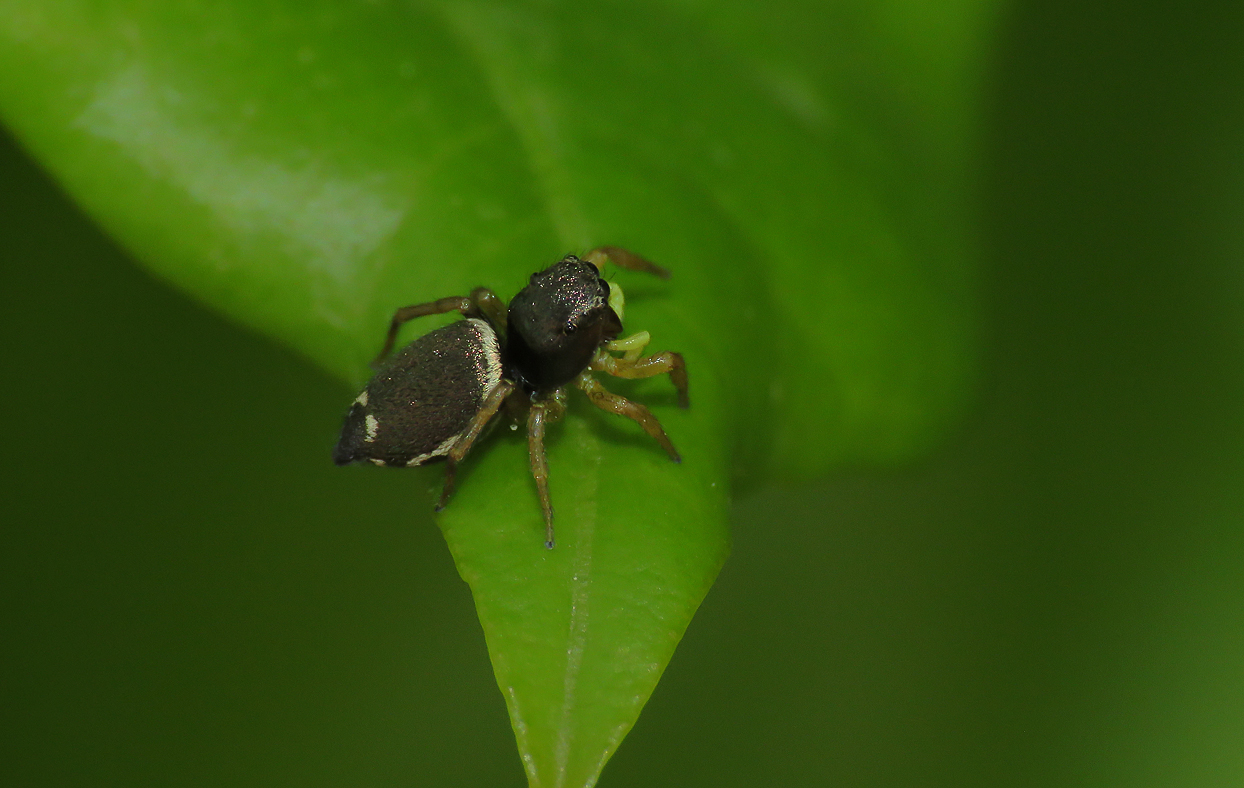
... the Heliophanus cupreus. This is also a very small species.
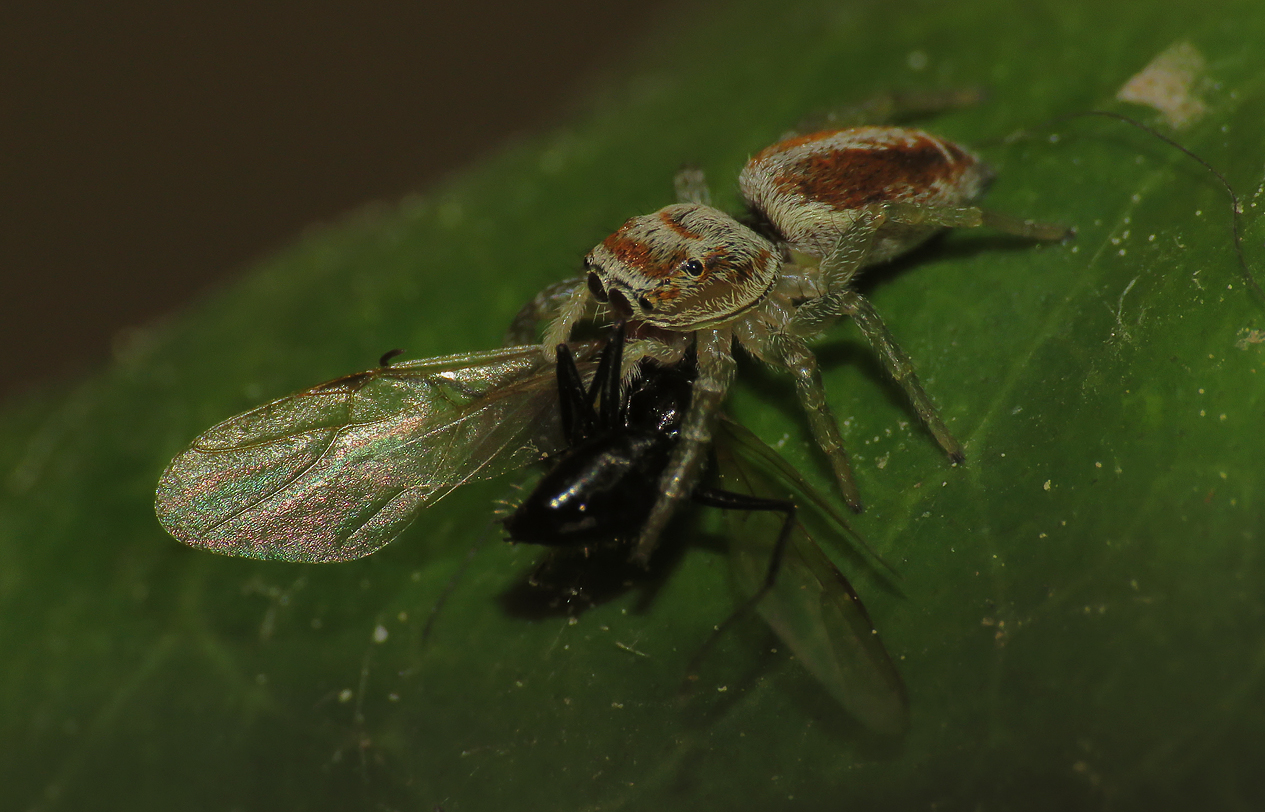
The most numerous jumping hunters where the always active and visible Icius hamatus.
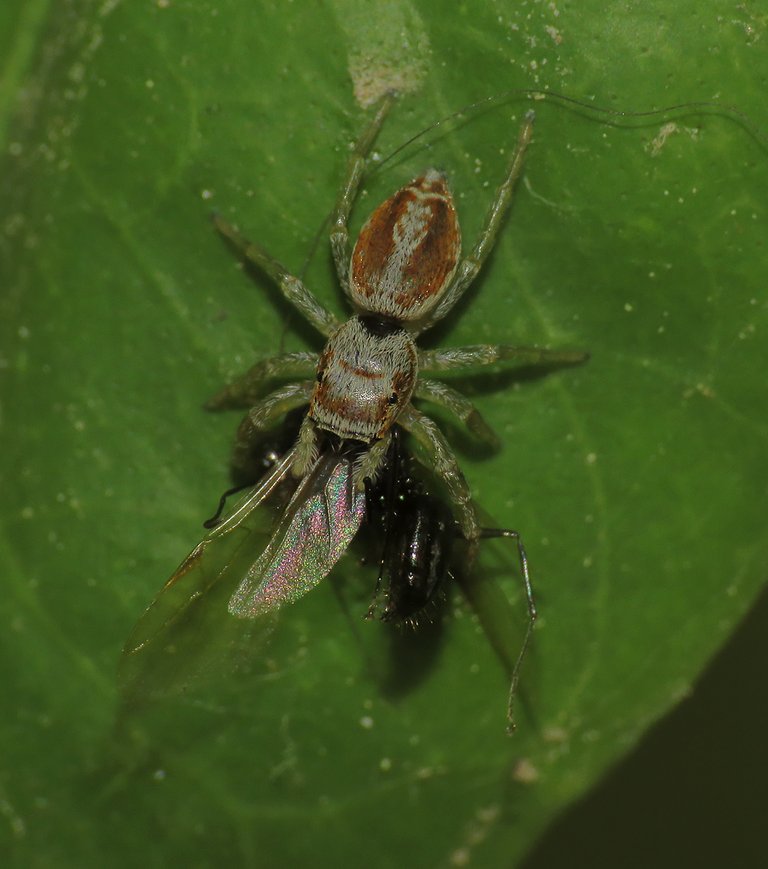
I counted five of them on that occasion.
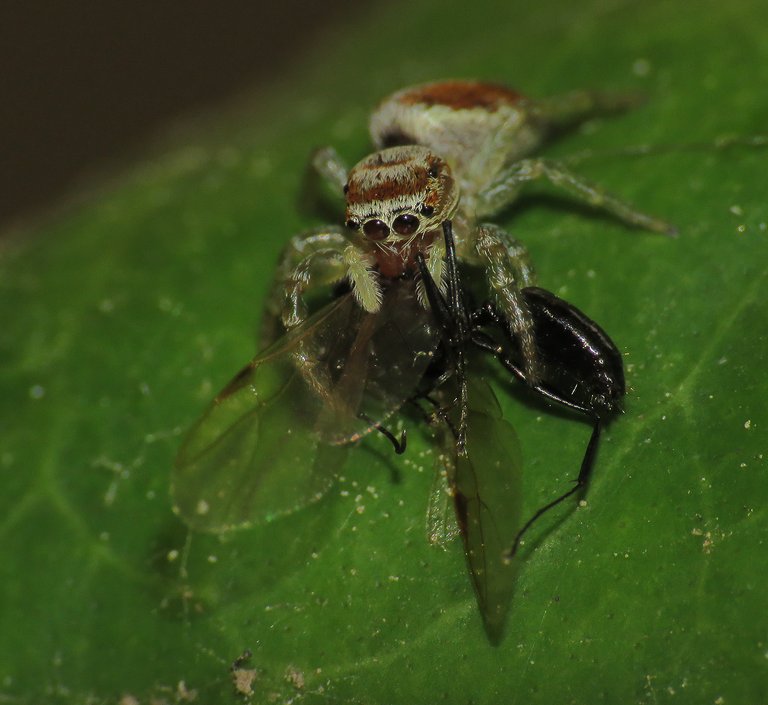 (Enlargeable)
(Enlargeable)
And now, after this relatively long spider introduction ...
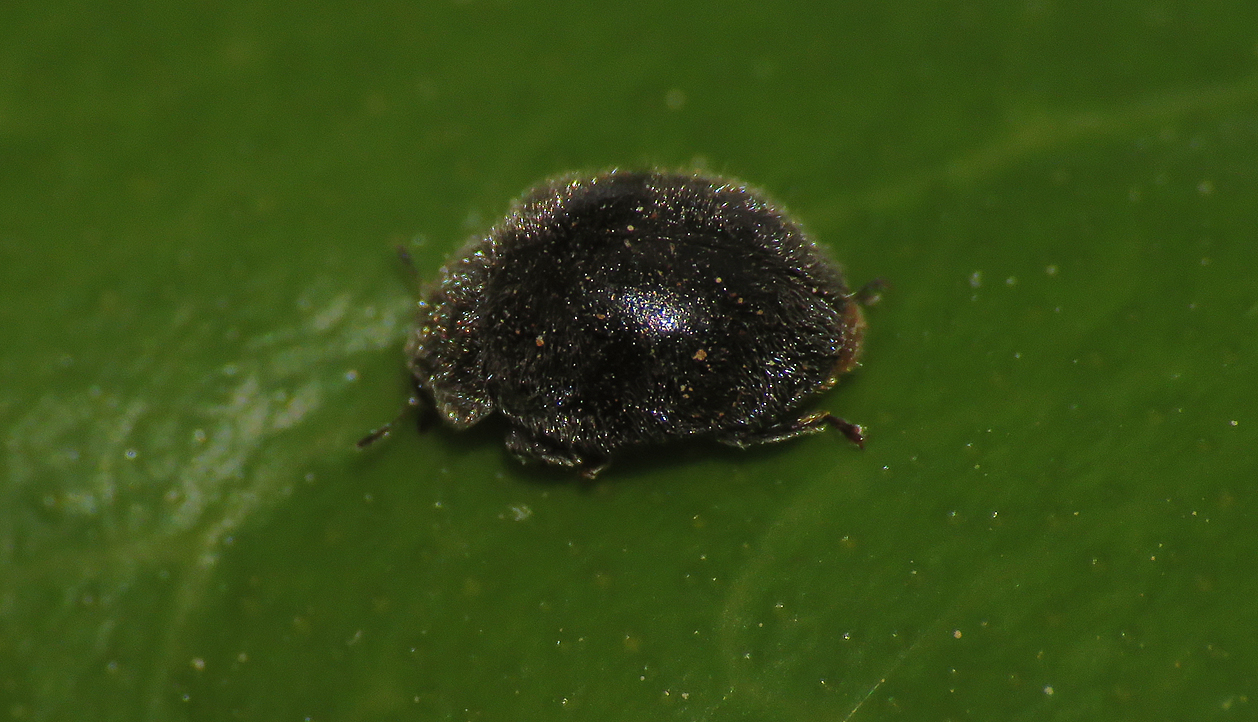
... is time to introduce some other inhabitants of my Tangerine tree.
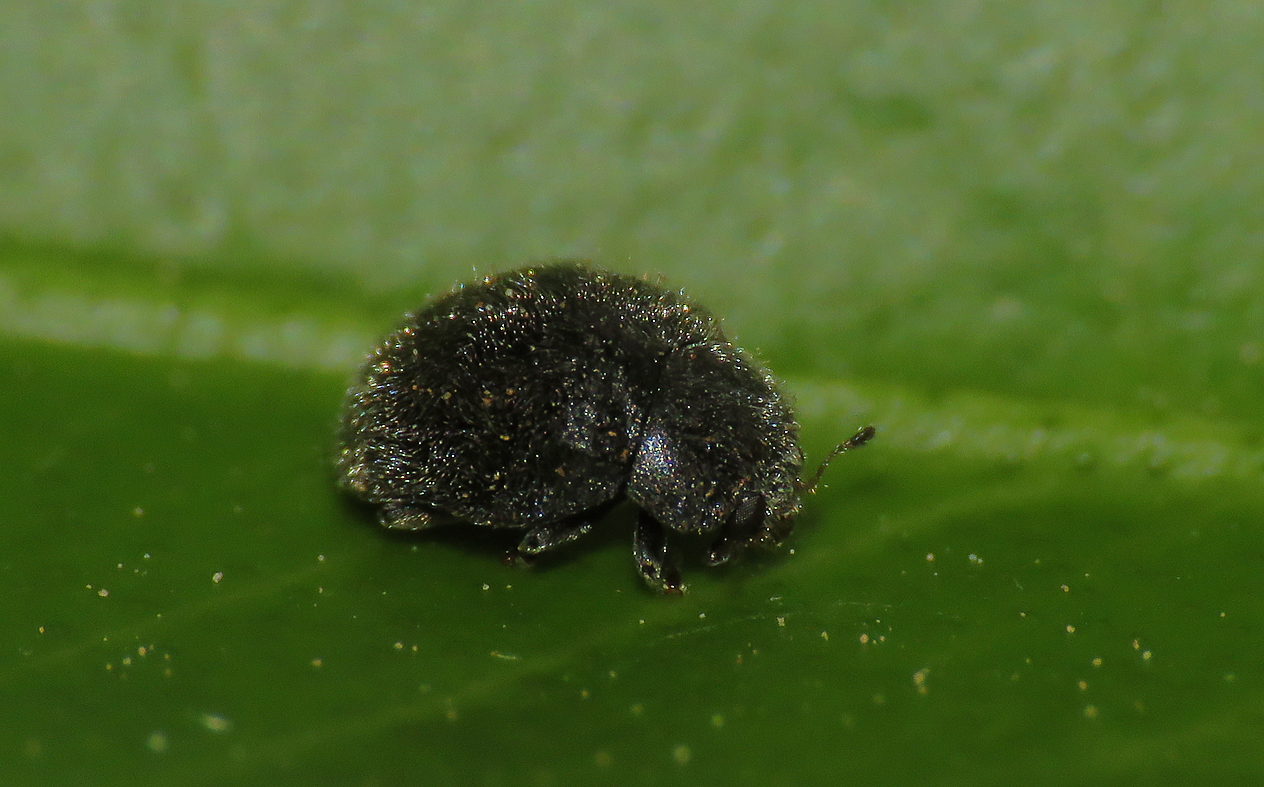
This is the very small Scymnus nigrinus ladybeetle ...
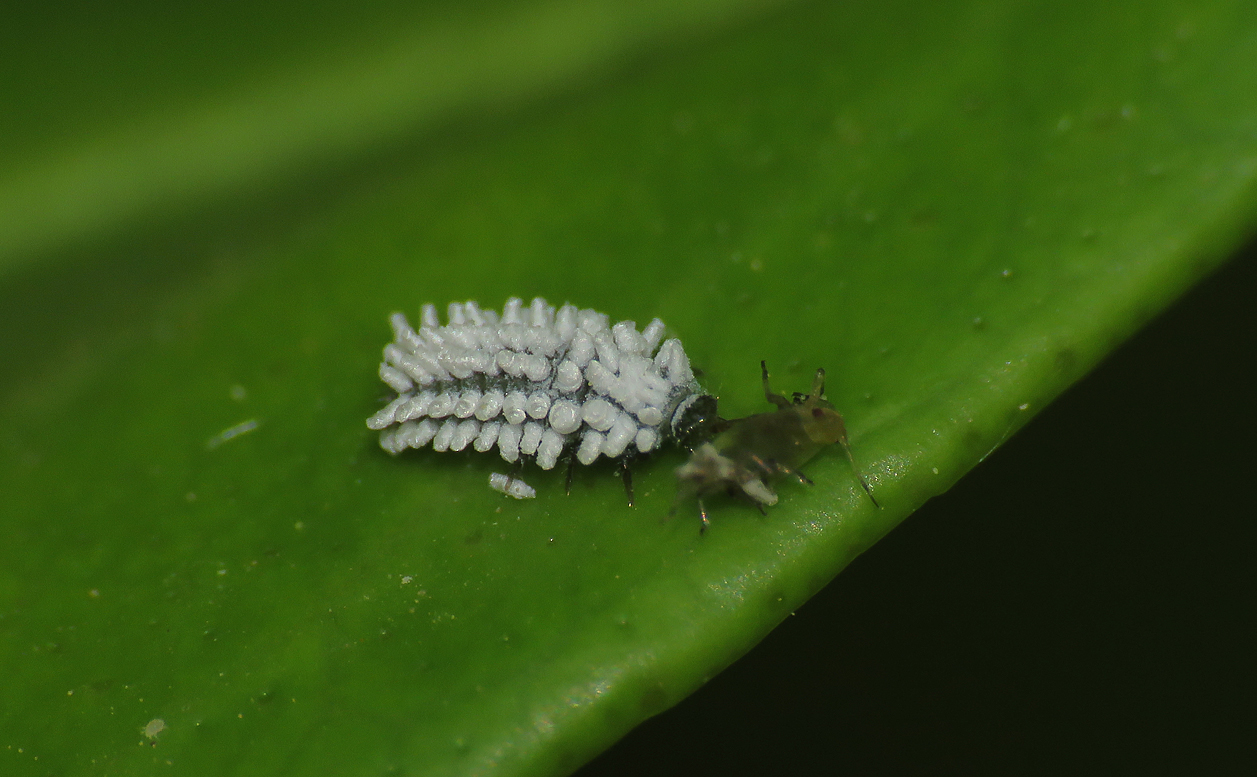
... and here is this insect's larva.
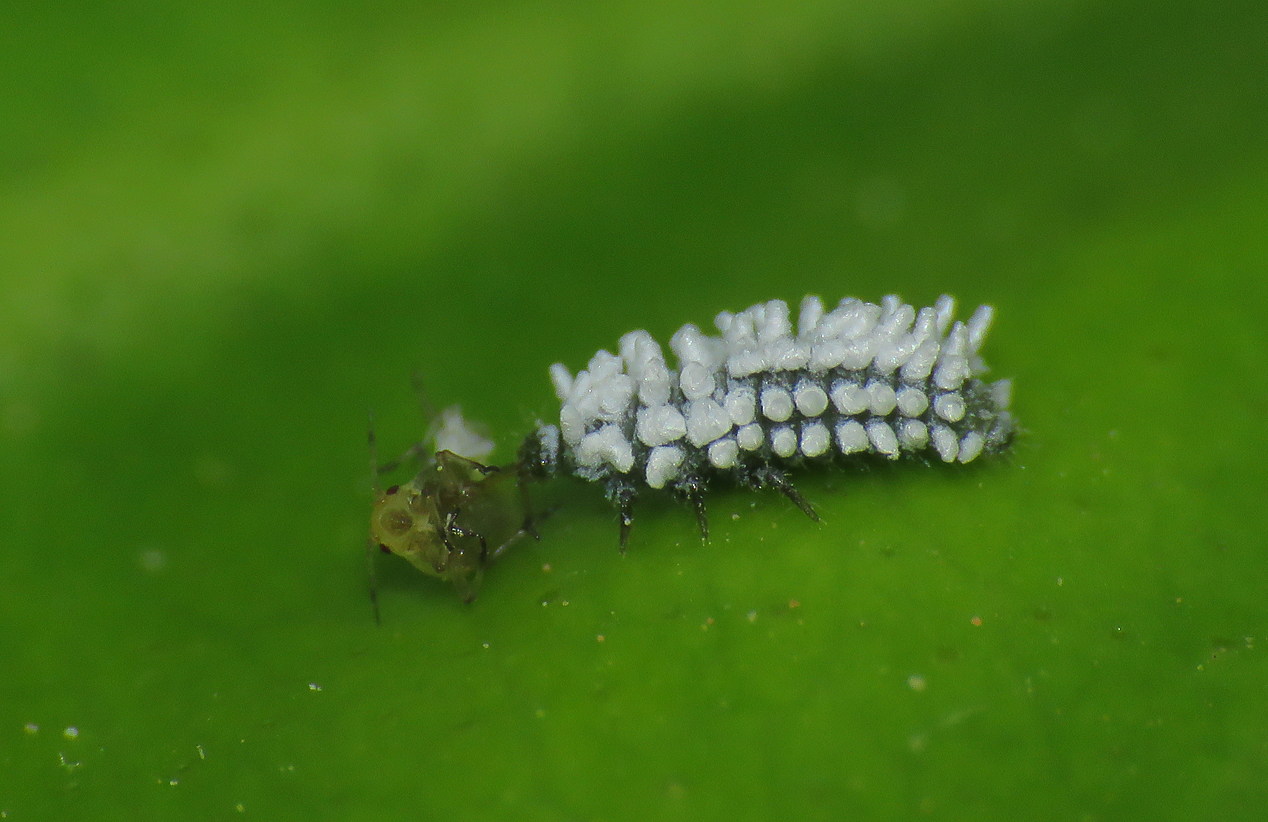
On these photographs the larva is feeding on the small aphid.
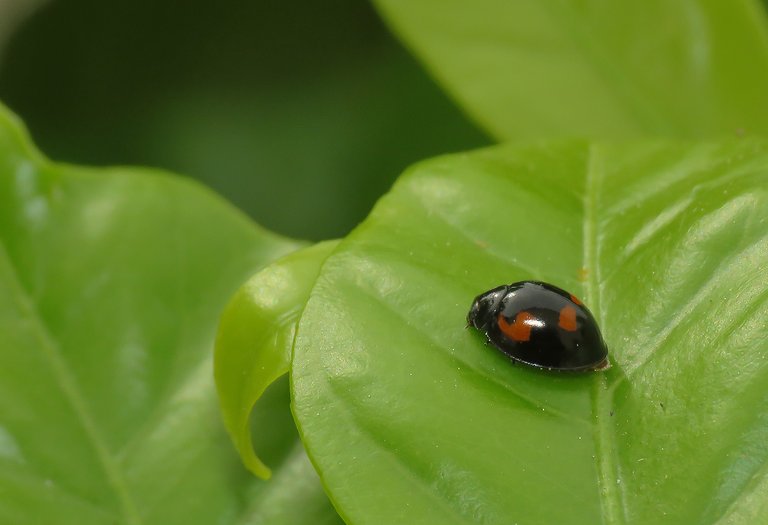 (Enlargeable)
(Enlargeable)
Here is another small ladybeetle that occasionally visits the tree ... the Exochomus quadripustulatus.
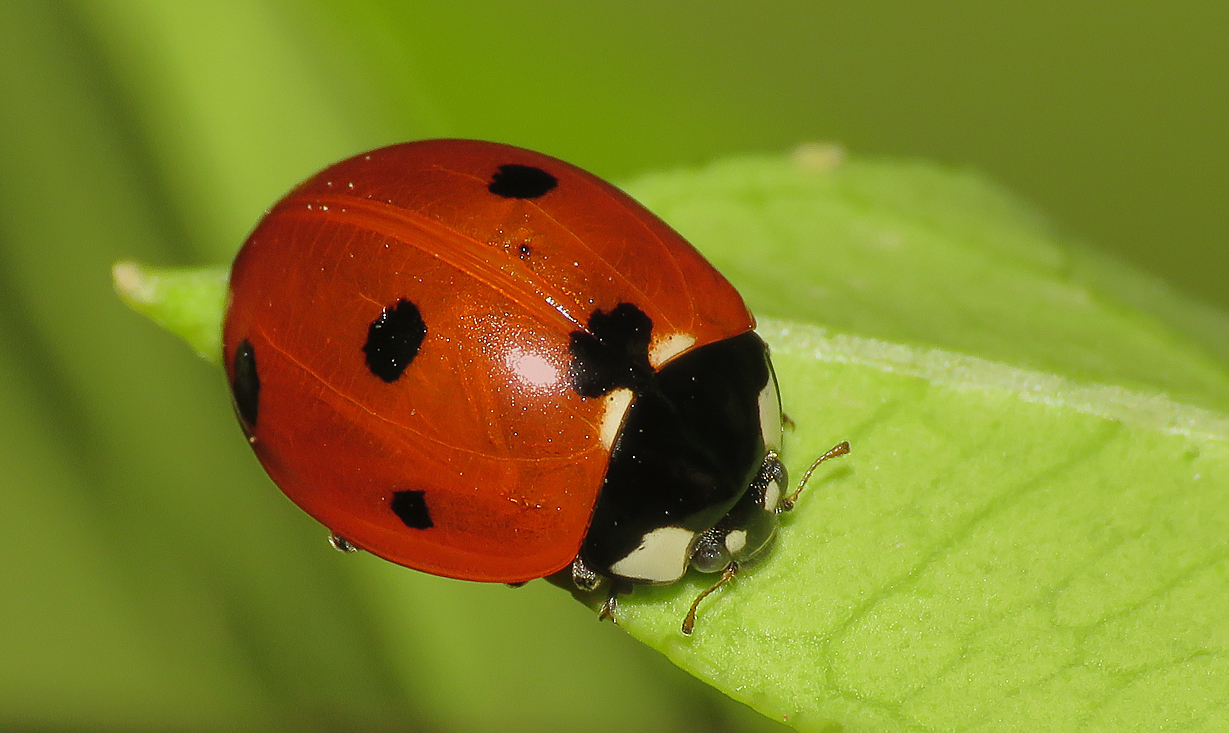
Some day after the swarming of ants, I saw a very common Coccinella septempunctata ... the " archetypical" Ladybeetle ... which is very common in the area, but not so on my Tangerine tree.
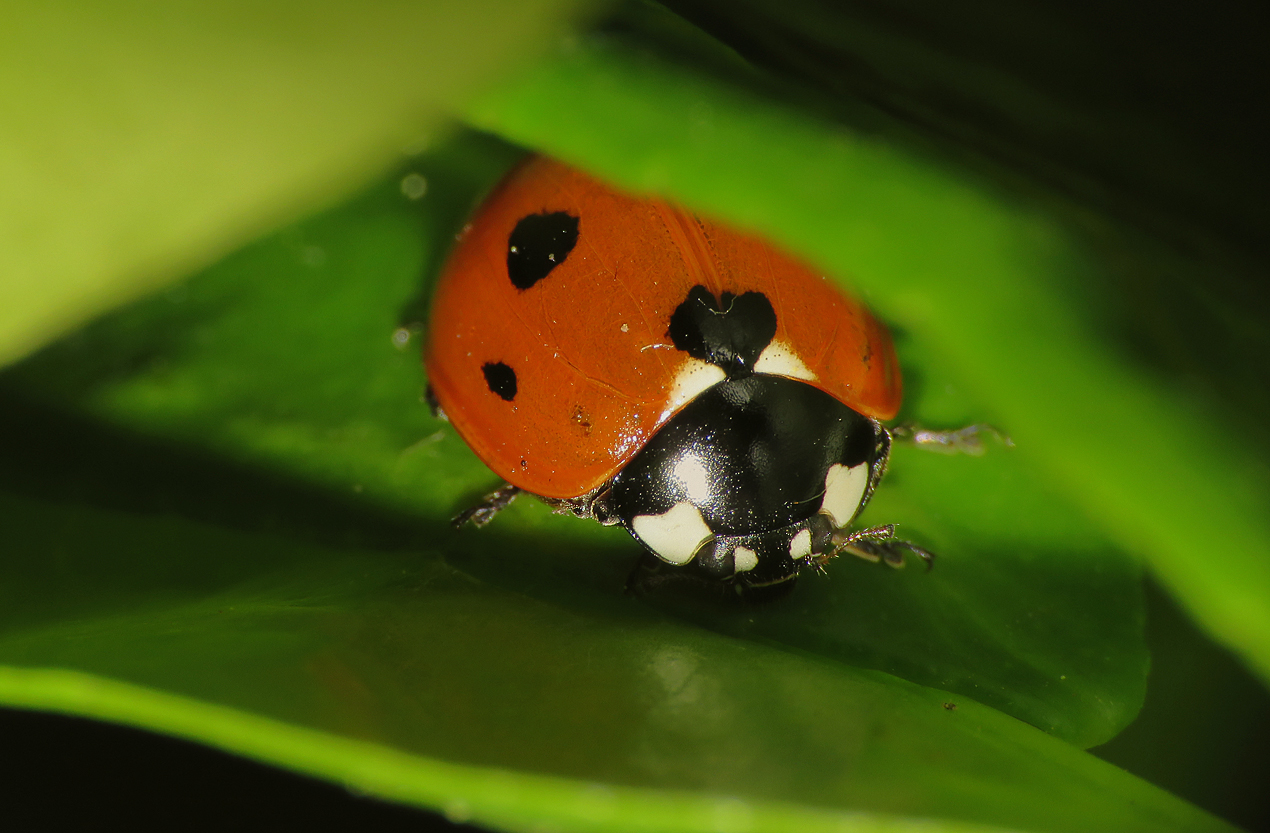
It was a cloudy day ... with short periods of very gentle rain ... so this beautiful insect found shelter under the thick and relatively large leaves.
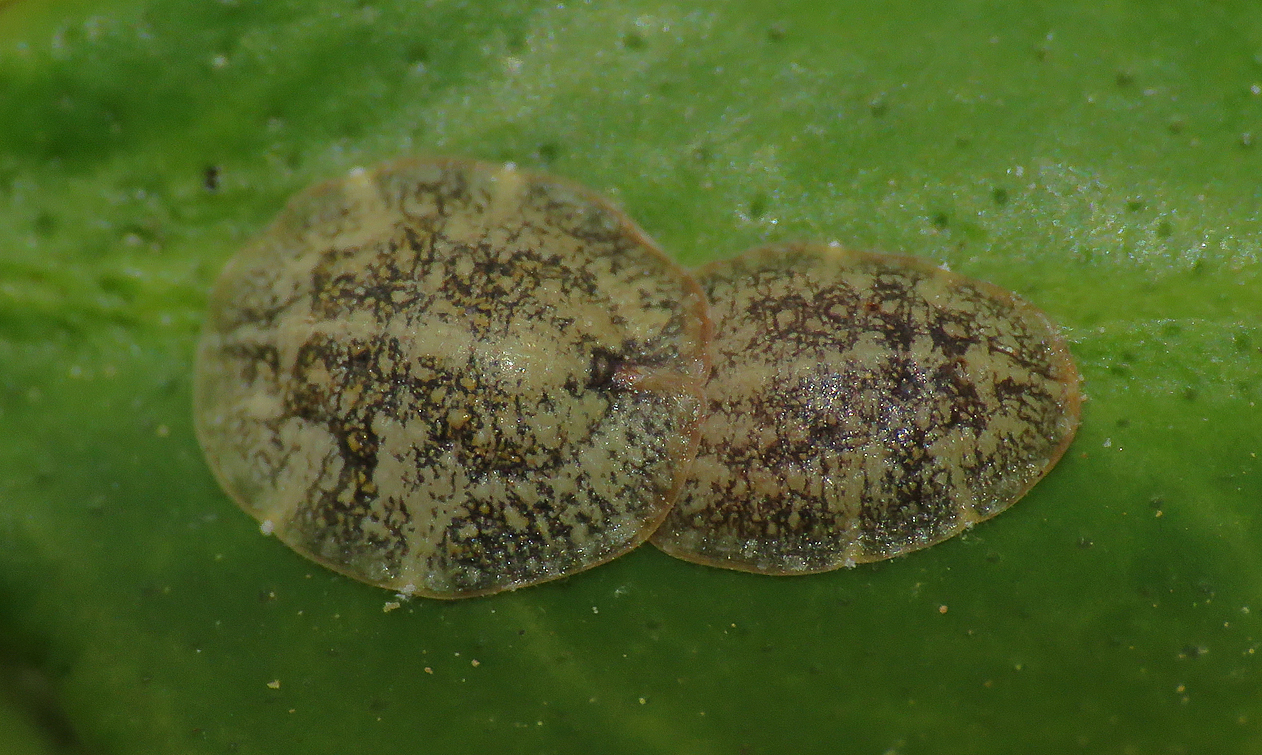
These Citriola scales (Coccus pseudomagnoliarum) are the regular inhabitants of the smooth leaves.
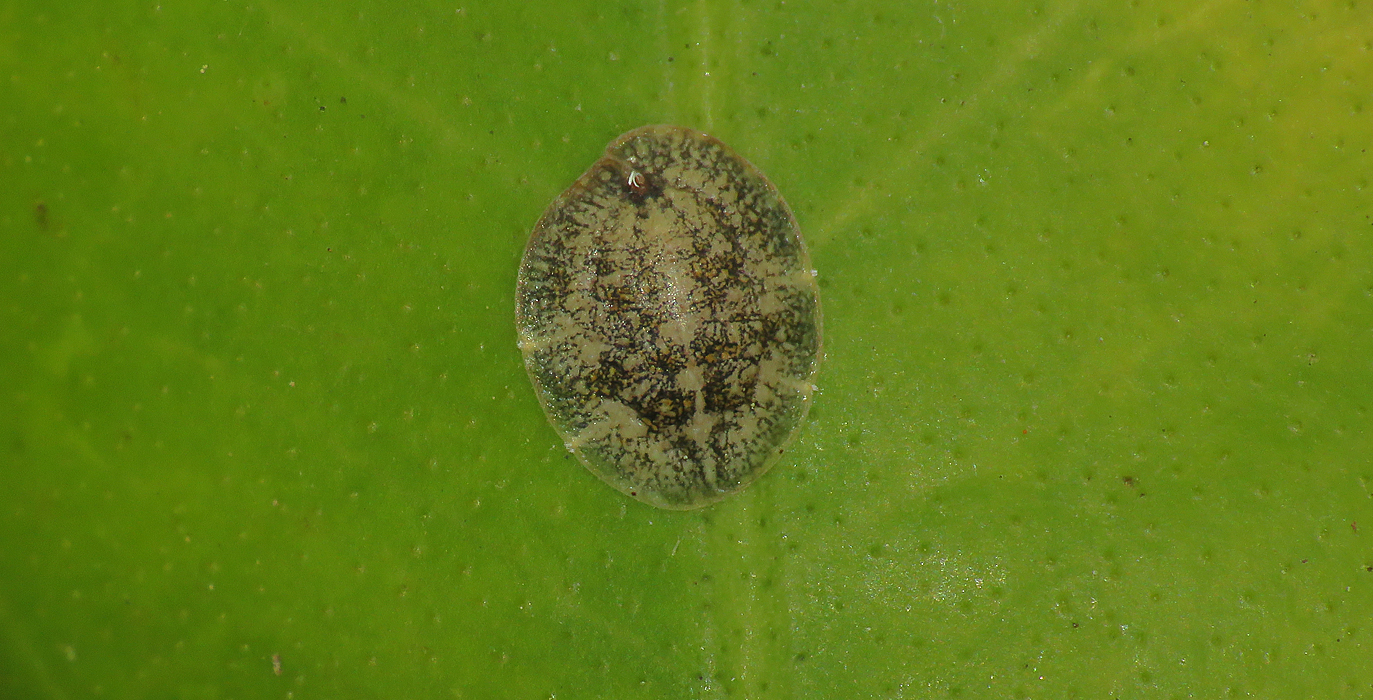
This is another scale insect species native to the Easthern Asia, Japan and southern China, that conquered new territories attached to cultivated plants.
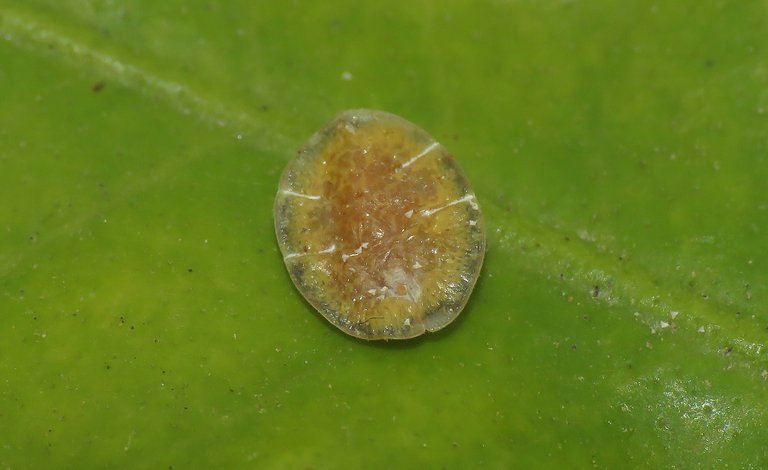 (Enlargeable)
(Enlargeable)
This is a look at the other side of the scale ... as you can see is hard to come to conclusion that this is an insect judging only by its surface anatomy.
I find the Scale insects pretty fascinating.
There are only female Citricola scale insects. They reproduce through parthenogenesis.
The life of this species starts with something called crawlers. In this stage they can move to a good feeding site, attach themselves and become fixed to that feeding and living place.
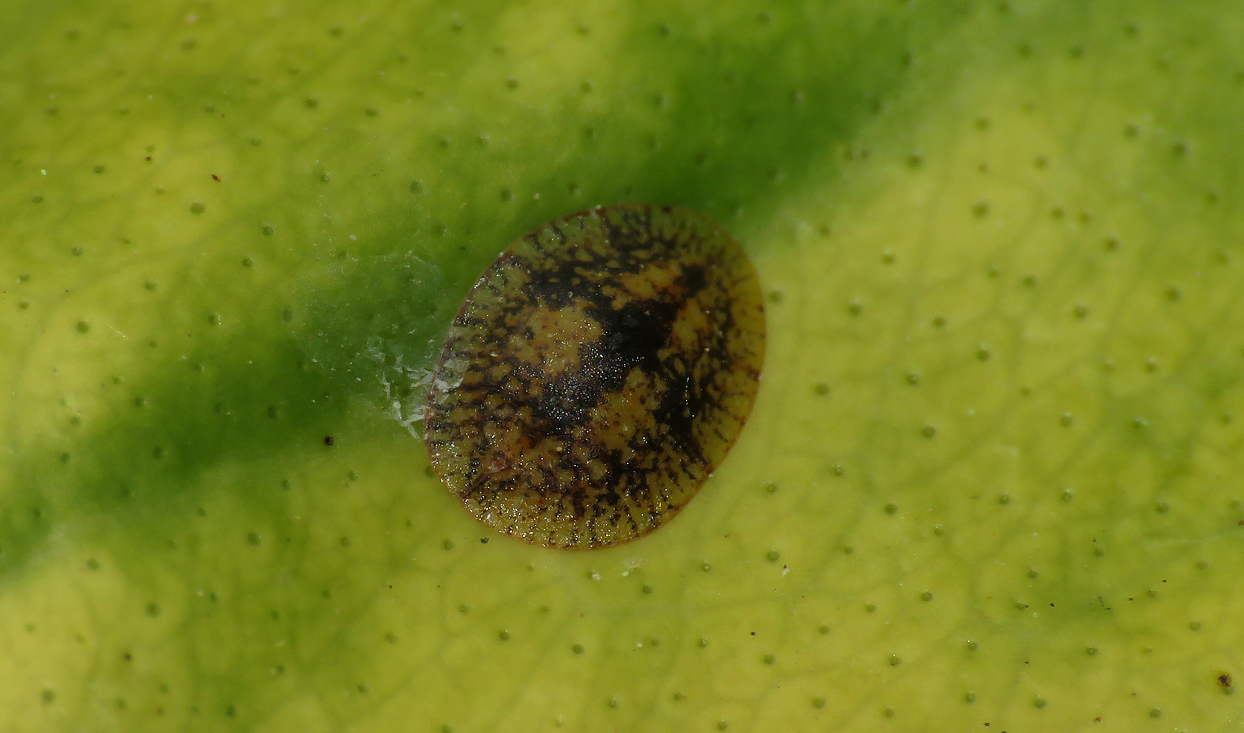
In the part three of the series, I'll show you some interesting interactions between these strange insects and the ants ... and for now :D while eagerly awaiting the next episode ...
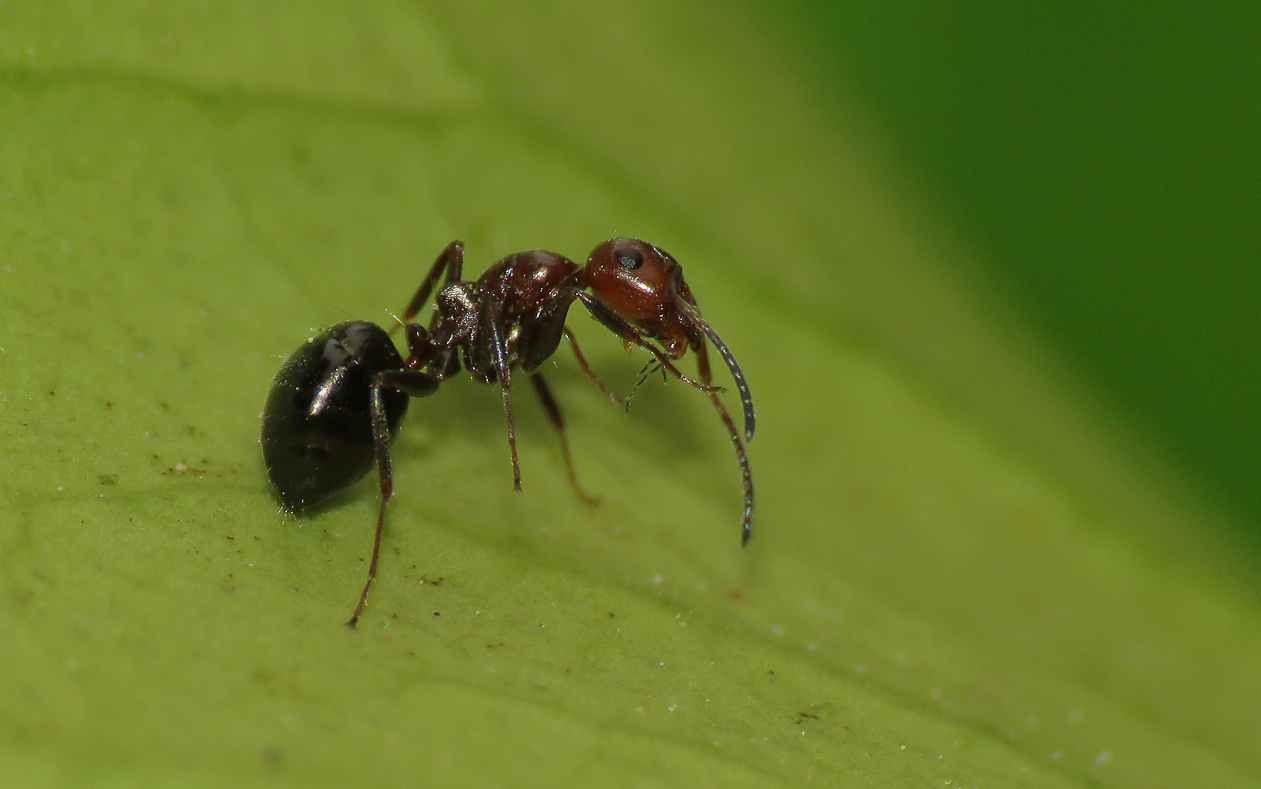
... you can take a look at this ant ( I don't know the exact species ) ...
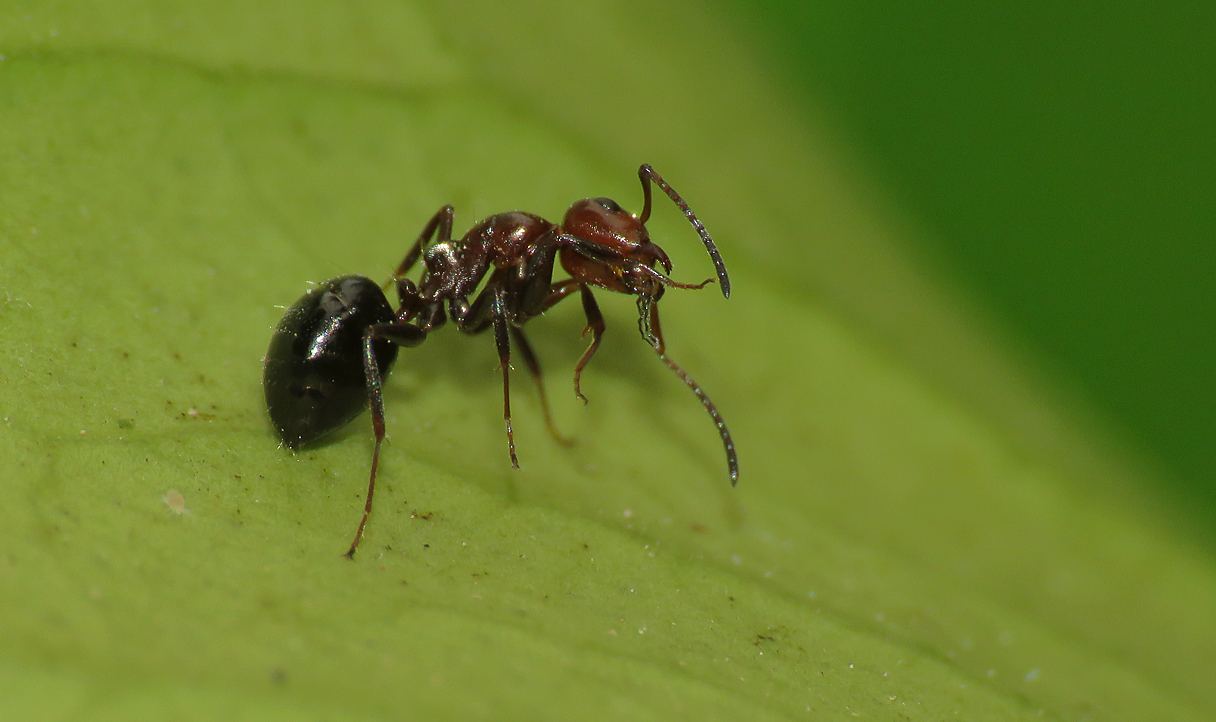
... cleaning its mouth.
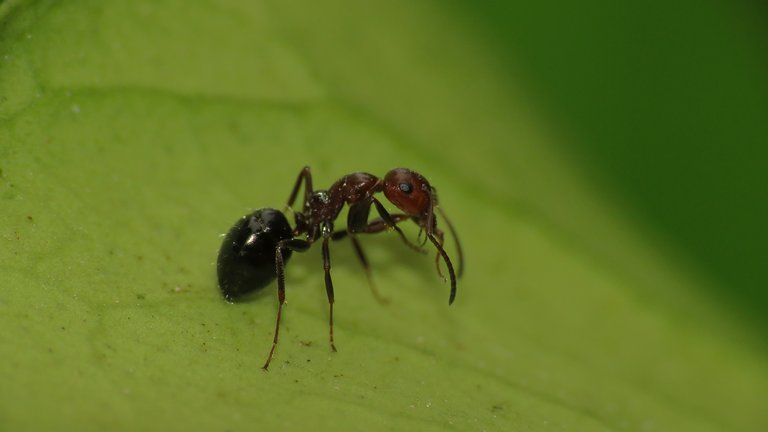 (Enlargeable)
(Enlargeable)
I encounter this species regularly when the tree is in bloom ... and they feed on flowers.
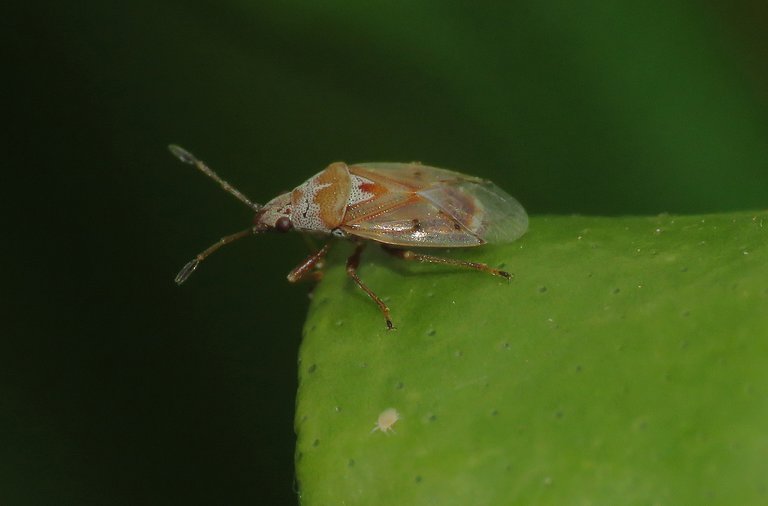
Here is a minuscule bug I noticed only once and I don't know the species ... or anything else about this insect.
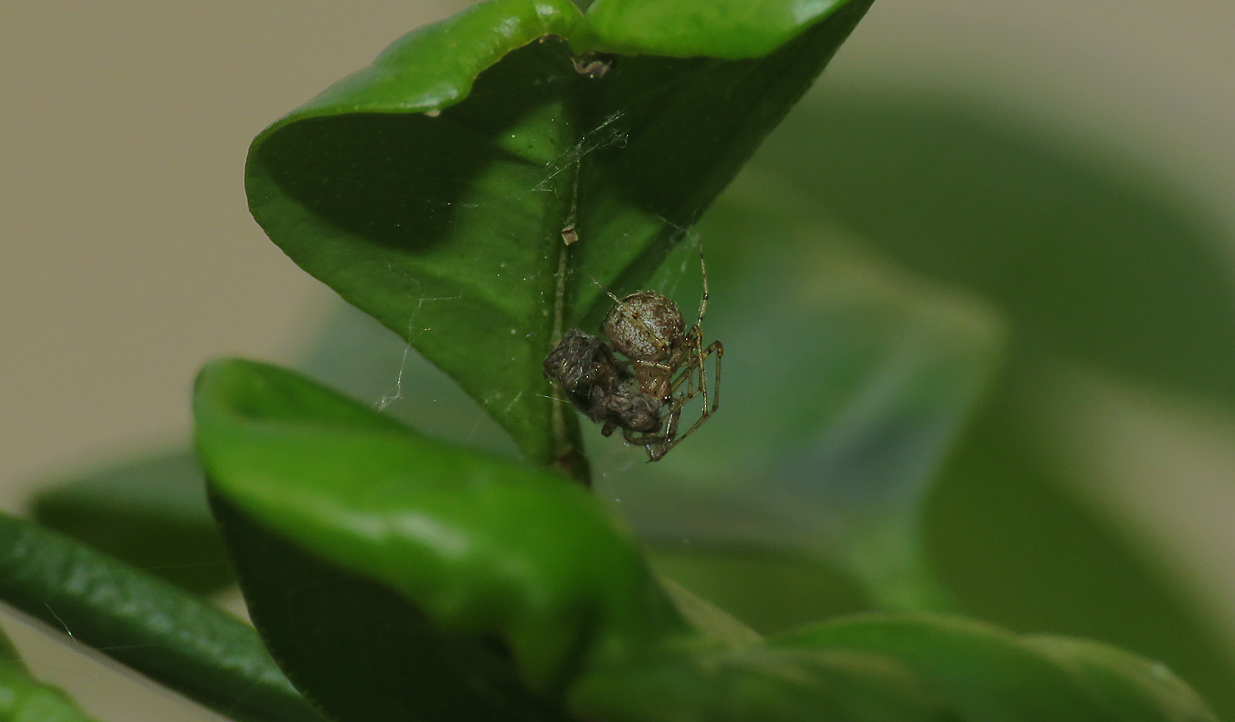
This very small spider has built a trap under the leaf on the top of the small tree ...
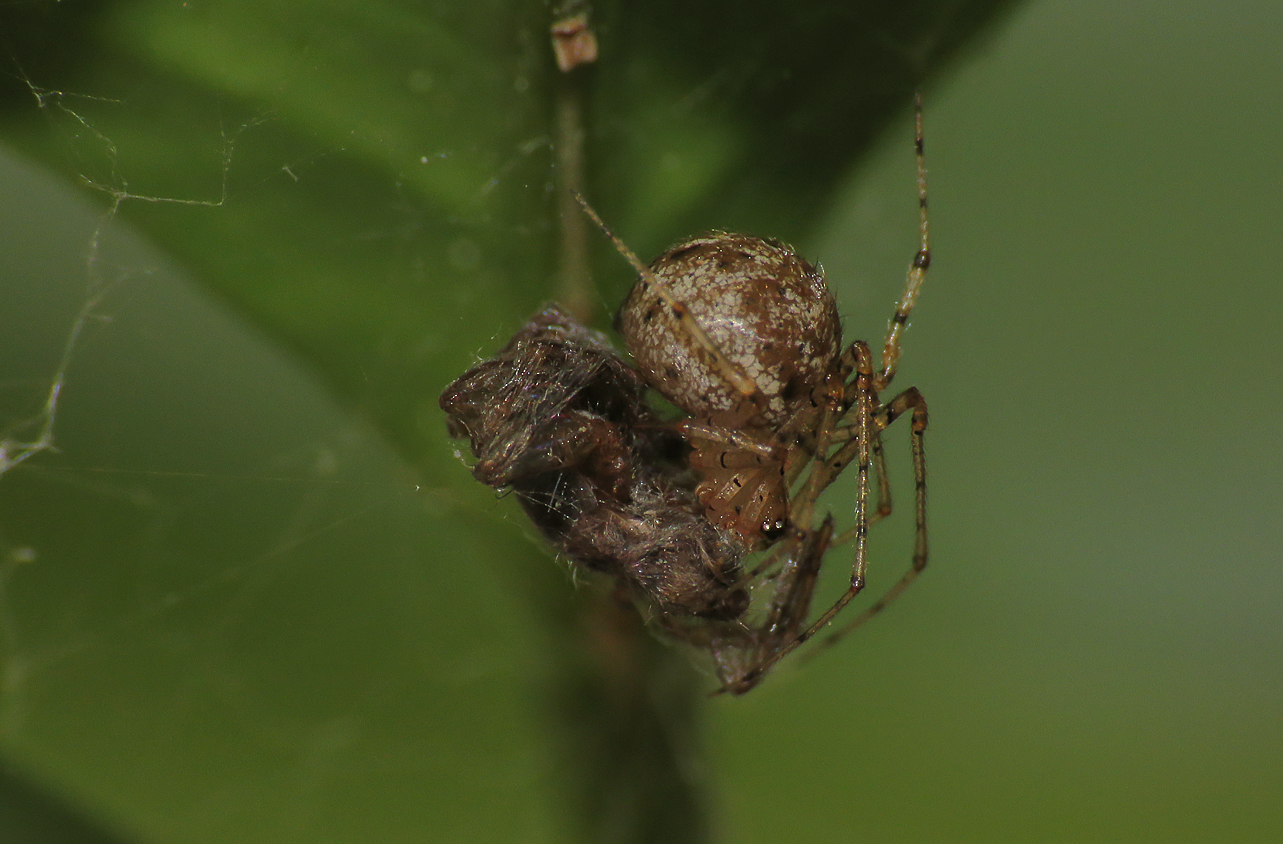
... and judging by the anatomy of the thing enveloped in silk ... I'm pretty sure that he's feeding on another spider ... of a very different, more robust looking kind ... TO BE CONTINUED ... as always in these series on HIVE, all the photographs are my (painstaking) work.
Thanks for your contribution to the STEMsocial community. Feel free to join us on discord to get to know the rest of us!
Please consider supporting our funding proposal, approving our witness (@stem.witness) or delegating to the @stemsocial account (for some ROI).
Please consider using the STEMsocial app
app and including @stemsocial as a beneficiary to get a stronger support.
Wild looking in the insect world ... 😊
Always some action there :)
Awesome photos! I can't believe you were able to capture spiders so tiny. They were my favorite.